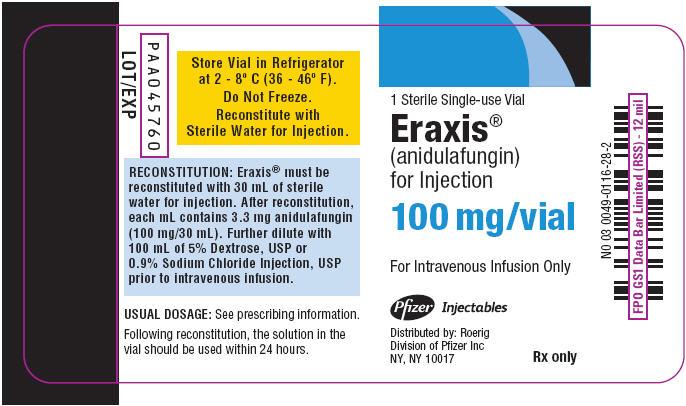A study on Anidulafungin therapy in oncology patients in a tertiary care hospitals
T. Noorul Sahin1, D. Suryaprabha2
1Clinical Pharmacist, Kauvery Hospital, Tennur, Trichy
2Chief Clinical Pharmacist and Assistant Manager – Clinical Research, Kauvery Hospitals, India
*Correspondence: Tel: +91 98414 86267; Email ID: suryaprabha@kauveryhospital.com
Abstract
Background Invasive fungal infections occur predominantly in neutropenic and severely ill non-neutropenic patients. Among patients with malignant haematological diseases, the highest rate of invasive fungal infections was found in patients with neutropenia from induction chemotherapy for acute leukaemia or myelodysplastic syndrome. Methods: This was a prospective study of 16 patients, who were admitted to a tertiary care hospital, for the period of two years between April 2021 and March 2023, with a reported history of Anidulafungin prescription . Results. 16 patients were taken over a 2-year period. Males and females were both equally treated with this drug. Most commonly affected age group was middle age, 61-70 years, and their percentage was 31.25 %. Discharges from hospital were within 10 days in 7 patients, a percentage of 43.75%. Seven patients were discharged alive, a percentage of 43.75%. 8 patients died, a percentage of 50.0% . One patient was discharged against medical advice (AMA), a percentage of 6.25%. The mortality rate was 50%. 3 patients were readmitted and treated again with this drug. In that group one mortality happened. Conclusion: In conclusion, Anidulafungin was exhibited in 16 patients as a highly active prophylaxis/ therapy for invasive fungal infections. The drug is expected to have potentially superior efficacy versus other antifungals, making them agents of choice for moderately to severely ill patients with invasive fungal infections. [5]
Keywords: Against medical advice (AMA), Anidulafungin, Candidemia, Aspergillus, morbidity and mortality
Background
Invasive fungal infections occur in predominantly in neutropenic and severely ill non-neutropenic patients. Despite advances in treatment options and modalities, the mortality associated with invasive fungal infections is still high in Immunosuppressive oncology patients. Invasive fungal infections are a major cause of morbidity and mortality for Oncology patients. This provides a clear rationale for antifungal prophylaxis in this population. [1,2]. As several investigators have shown, mortality of fungal infections is directly correlated with the delay of initiation of adequate antifungal therapy [3,4]. Thus, early treatment with a reliably active and safe drug is mandatory to achieve the optimum clinical outcomes. Among patients with malignant haematological diseases, the highest rates of invasive fungal infections are found in patients with neutropenia due to induction chemotherapy for acute leukemia or myelodysplastic syndrome.
Antifungal activity of Anidulafungins in clinically relevant Candida spp
In contrast to azole and polyene antifungals, the Anidulafungin inhibit the synthesis of 1,3-beta-D-glucan, an essential polysaccharide component of the cell wall in Candida spp. and Aspergillus spp.

Methods
This was a prospective study of 16 patients, who were admitted to a tertiary care hospital for the period of two years between April 2021 and March 2023 with a reported history of Anidulafungin prescription in Oncology, patients are taken.
Results and Observations
In this series 16 patients were taken over a 2-year period. Males and females were both equally treated with this drug. Most commonly effected age group was middle age, 61-70 years, and their percentage was 31.25 %.
From the hospital, the patients were discharged within 10 days in 7 patients at a percentage of 43.75%. 7 patients were discharged alive, a percentage of 43.75%. Eight patients died, a percentage of 50.0%. One patient was discharged against medical advice (AMA), a percentage of 6.25%. The mortality rate was 50%. Three patients were readmitted and treated again with this drug. In that group, one mortality happened.
Table 1:Age and Sex Distribution Both Males and Females are commonly prescribed this drugs
| Age (years) | Female | Male | Total |
| 21-30 | 1 | 0 | 1 (6.25%) |
| 31-40 | 1 | 1 | 2 (12.5%) |
| 41-50 | 0 | 1 | 1 (6.25%) |
| 51-60 | 2 | 2 | 4 (25.0%) |
| 61-70 | 3 | 2 | 5 (31.25 %) |
| 71-80 | 1 | 2 | 3 (18.75 %) |
| Tot | 8 | 8 | 16 |
Table 2. Length of Stay Status of Discharge.
| Age (years) | Total |
| 0–5 | 2 (12.5%) |
| 6–10 | 7 (43.75%) |
| 11–15 | 2 (12.5%) |
| 16-20 | 3 (18.75%) |
| 26-30 | 1 (6.25 %) |
| 31-35 | 1 (6.25 %) |
| Total | 16 |
| Status | Total |
| Alive | 7 (43.75 %) |
| AMA | 1 (6.25 %) |
| Death | 8 (50.0%) |
| Total | 16 |
Conclusion
In conclusion, Anidulafungin was exhibited in 16 patients as a highly active therapy for invasive fungal infections. The drug is expected to have potentially superior efficacy versus other antifungals, making them agents of choice for moderately to severely ill patients with invasive fungal infections.
References
- Wey SB, Mori M, Pfaller MA, Woolson RF, Wenzel RP. Hospital-acquired candidemia. The attributable mortality and excess length of stay. Arch Intern Med. 1988;148:2642-2645. doi: 10.1001/archinte.1988.00380120094019.
- Zaoutis TE, Argon J, Chu J, Berlin JA, Walsh TJ, Feudtner C. The epidemiology and attributable outcomes of candidemia in adults and children hospitalized in the United States: a propensity analysis. Clin Infect Dis. 2005;41:1232-1239. doi: 10.1086/496922.
- Morrell M, Fraser VJ, Kollef MH. Delaying the empiric treatment of candida bloodstream infection until positive blood culture results are obtained: a potential risk factor for hospital mortality. Antimicrob Agents Chemother. 2005;49:3640-3645. doi: 10.1128/AAC.49.9.3640-3645.2005.
- Garey KW, Rege M, Pai MP, Mingo DE, Suda KJ, Turpin RS, Bearden DT. Time to initiation of fluconazole therapy impacts mortality in patients with candidemia: a multi-institutional study. Clin Infect Dis. 2006;43:25-31. doi: 10.1086/504810.
A Glöckner. Treatment and prophylaxis of invasive candidiasis with anidulafungin, caspofungin and micafungin – review of the literature. Eur J Med Res. 2011; 16(4): 167-179.
doi: 10.1186/2047-783X-16-4-167.
